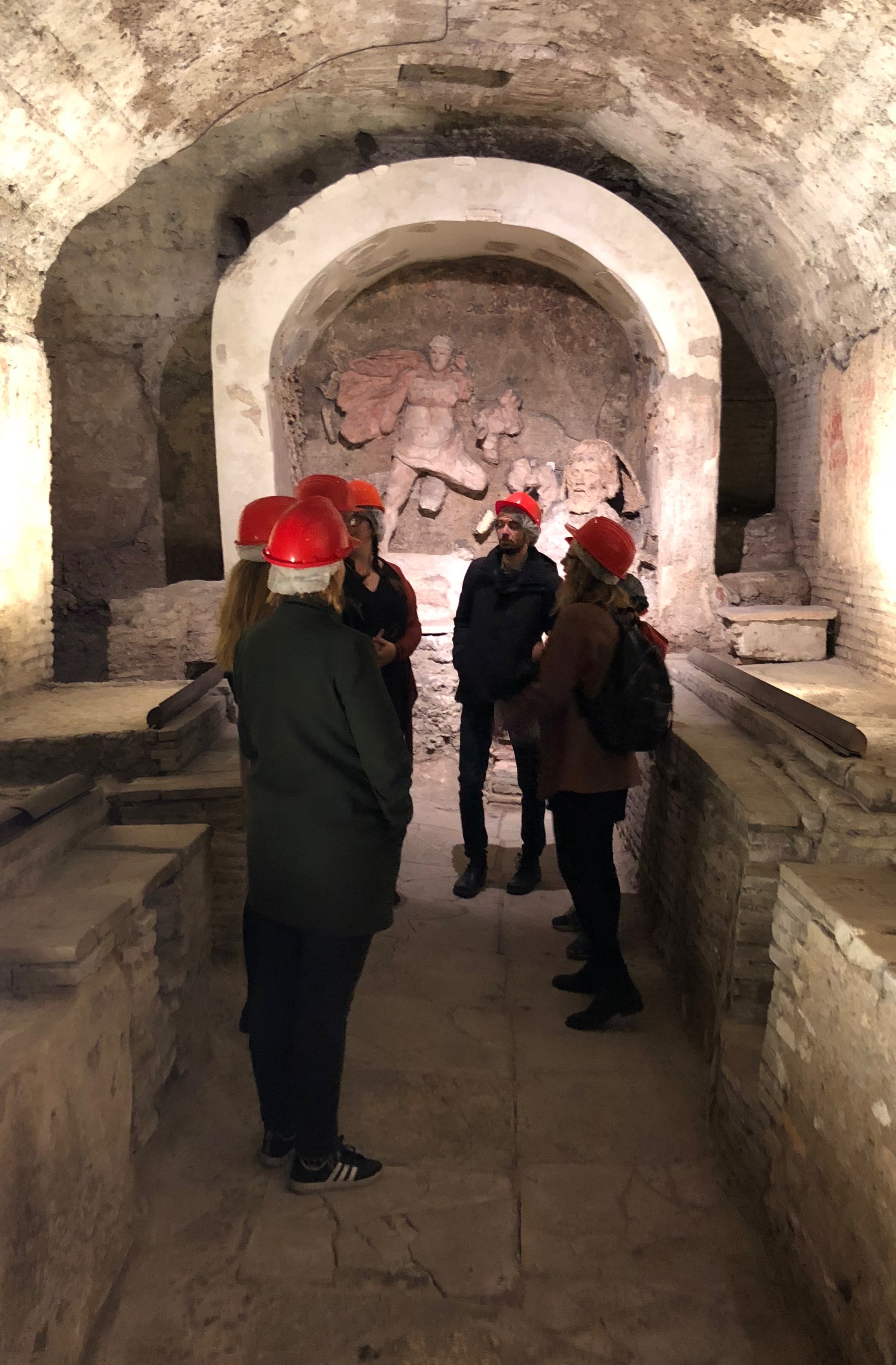Successful spring school in Rome
During the past week the Spring School on Urban Religion was held in Rome. Written by Assistant professor Michael Blömer, PhD student Nikoline Sauer Petersen & PhD student Line Egelund Hejlskov.

Written by Michael Blömer, Nikoline Sauer Petersen and Line Egelund Hejlskov
From the 12th-16th of March, a spring school on Urban Religion in ancient Rome was organized by Centre for Urban Network Evolutions (UrbNet) and Max-Weber-Kolleg, Erfurt University. This was the latest product of the longstanding partnership between UrbNet and the Max-Weber-Kolleg. By bringing together methods and approaches from classical archaeology and history of religion, the collaboration aims at developing new strategies to further our understanding of how the urban shaped religion in ancient times and vice versa.
Accordingly, the aim of the spring school was to shed light on the complex interplay between religion and the city by focusing on a comprehensive and contextual approach to places imbued with religious significance and their urbanistic setting. Twelve PhD Students and postdoctoral fellows from different countries and with different disciplinary backgrounds participated in the school and worked on integrating archeology and history of religion in order to examine the entanglement between religion and the urban in the city of Rome from the Late Republic to the 4th century CE.
Each participant gave a presentation on a subject related to urban religion either on site or at the Danish Institute. The course started with an introduction by the organizers, Rubina Raja, director of UrbNet, and Jörg Rüpke, director of Max-Weber-Kolleg. This was followed by keynote lectures on the theoretical framework of urban religion and archaeological approaches to religion by Emiliano Urciuoli, Erfurt, and Michael Blömer, UrbNet. The second day took the group to the center of ancient Rome and included on-site presentations on the Capitoline Hill, the Forum Romanum, the Imperial Fora, and the Forum Boarium. Wednesday started with a visit of the Catacombs of the Vigna Randanini at Via Appia. Discussions centered on the role of religion in the constitution of the funerary realm. This was followed by a keynote lecture by Ulrike Egelhaaf-Gaiser, Göttingen University, and presentations on sacred landscapes and the formative influence of Etruscan religion on the religious landscape of Rome at the Danish Institute. On Thursday, the final day of the course, the focus was on minority and group religions and their engagement with the urban environment of Rome. The group visited and analyzed sites related to the cults of Mithras, Syrian gods such as Jupiter Dolichenus and Jupiter Heliopolitanus, and Christianity. A final discussion about the essence of urban religion and the use of the concept of urban religion ended the spring school. The course was a great success and stimulated fruitful discussions, triggered new ideas, and developed broader perspectives on urban religion and ways of refining this concept in the future.
